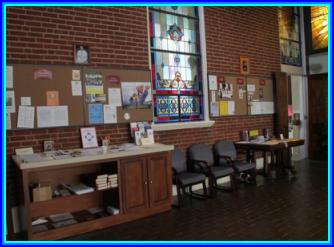

Q. 1. What is the vestibule in the Catholic Church?
A. 1. A vestibule is an anteroom (antechamber) or small foyer leading into a larger space, such as a lobby, entrance hall, passage, etc., for the purpose of waiting, withholding the larger space view, reducing heat loss, providing space for outwear, etc. The term applies to structures in both modern and historical architecture since ancient times. In modern architecture, vestibule typically refers to a small room next to the outer door and connecting it with the interior of the building. In ancient Roman architecture, vestibule (Latin: vestibulum) referred to a partially enclosed area between the interior of the house and the street.
A vestibule, also referred to as a porch, is a hall projecting in front of the fašade of a Church, found from the fifth century both in the East and the West.
The purpose of the vestibule, at least in western Europe, was not to provide a resting-place for penitents, but to deaden the noise outside.
In some Churches, the vestibule is used by parents of small children at times during the Holy Mass (or other Liturgical services) when their child is making noise to the extent that it is disturbing the congregation during the service. The door between the vestibule and the main part of the Church serves the purpose of cutting down the noise made by a child who may be crying.
In Catholic churches the vestibule can be fairly spacious, depending on the size of the building. It may provide room for book or pamphlet racks, bulletin boards, often the holy water fonts, and such notices as provide information to the worshippers either before or after they have attended Divine services or engaged in private devotions before the Blessed Sacrament.